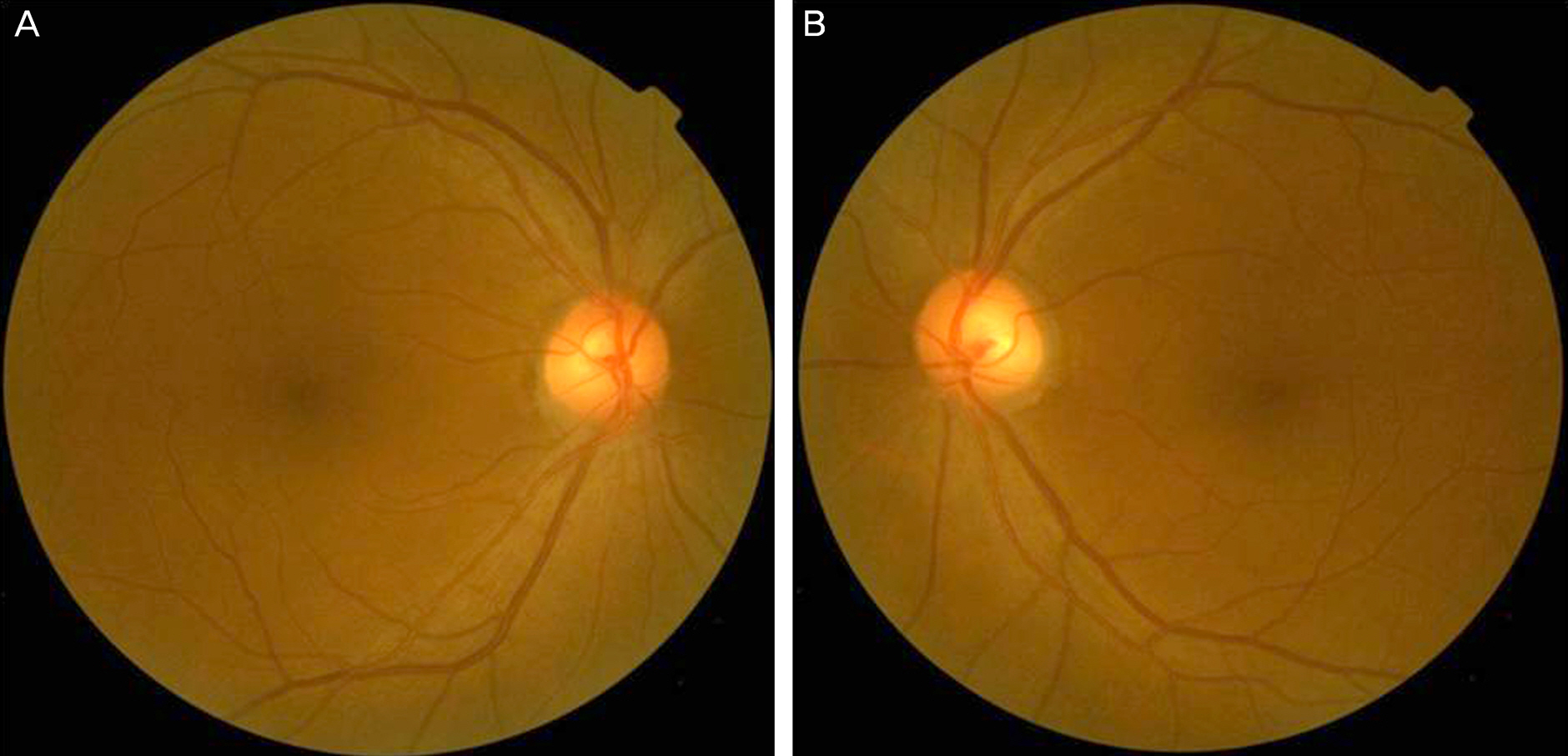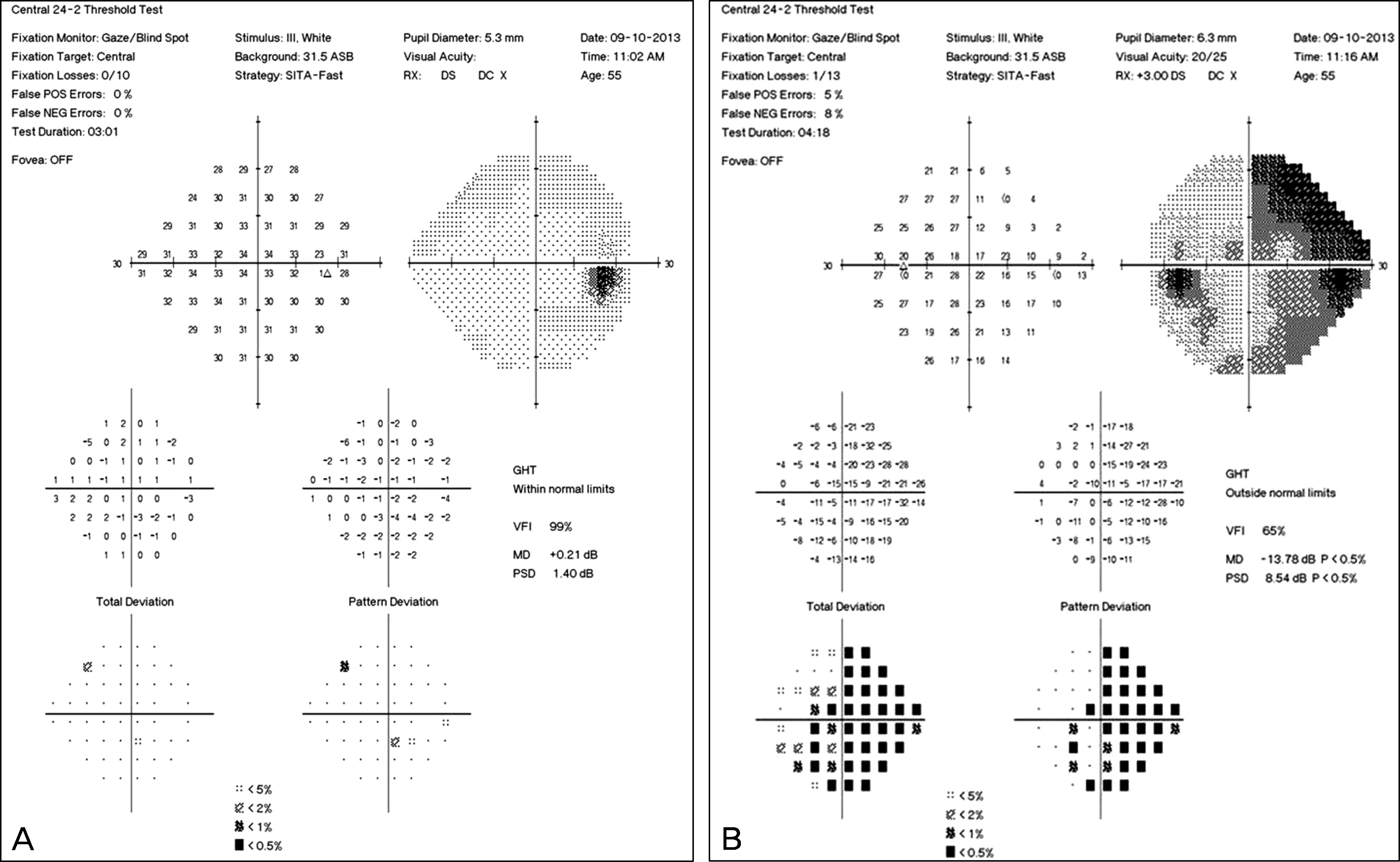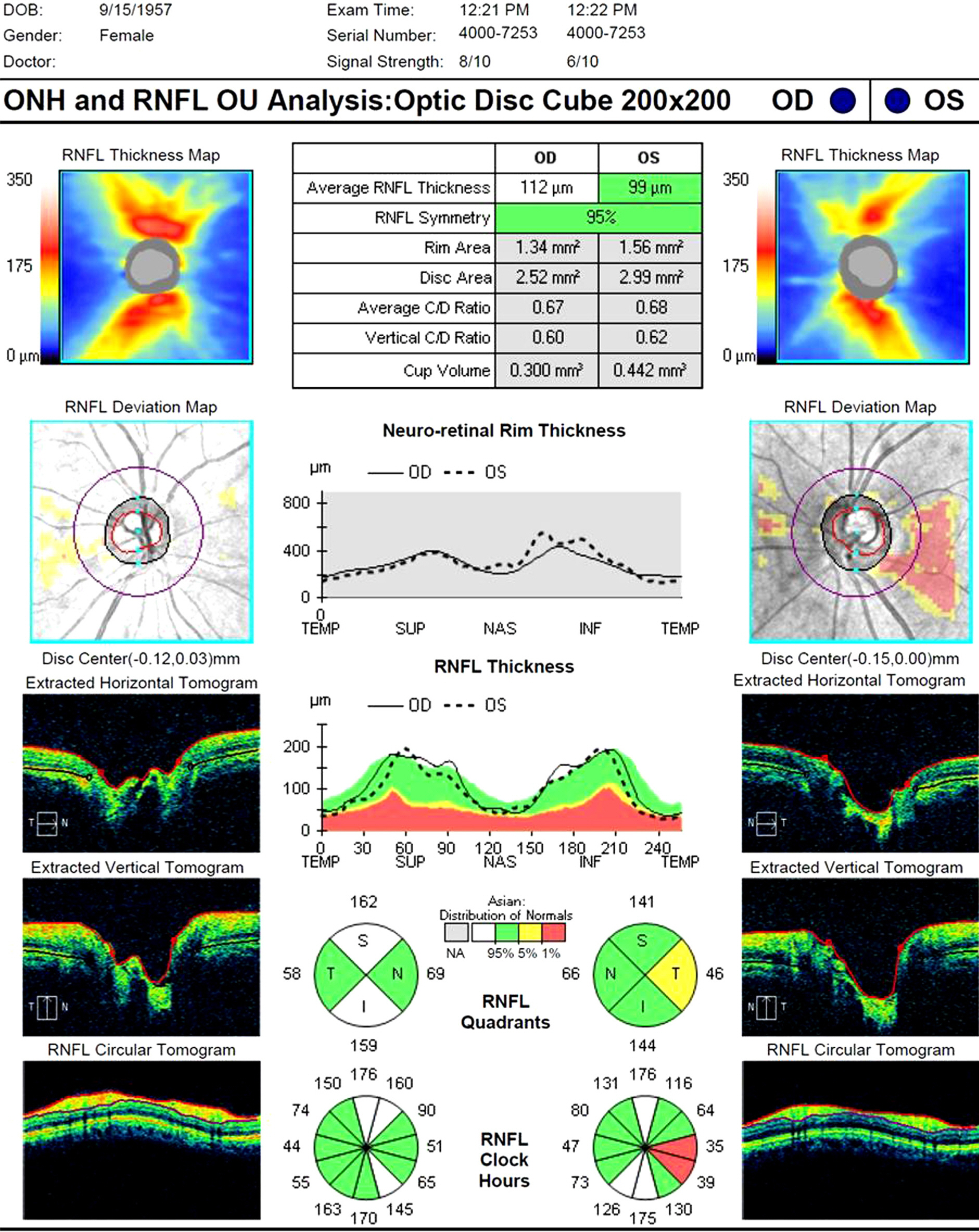J Korean Ophthalmol Soc.
2014 Sep;55(9):1406-1411. 10.3341/jkos.2014.55.9.1406.
Internal Carotid Artery Aneurysm Presenting with Unilateral Nasal Hemianopsia
- Affiliations
-
- 1Department of Ophthalmology, Chungnam National University School of Medicine, Daejeon, Korea. sblee@cnu.ac.kr
- KMID: 2217131
- DOI: http://doi.org/10.3341/jkos.2014.55.9.1406
Abstract
- PURPOSE
To report a case of unilateral nasal hemianopsia caused by a large internal carotid artery aneurysm.
CASE SUMMARY
A 56-year-old female presented with large cupping in the left optic nerve head detected incidentally during a routine check-up. She had no underlying systemic disease except hypertension. The best corrected visual acuity was 20/20 in both eyes and a slit-lamp examination showed no abnormal findings. Ophthalmoscopy showed cup/disc ratios of 0.6 in the right eye and 0.75 in the left eye. Relative afferent papillary defect or color vision defect was not observed. A Humphrey visual-field test indicated unilateral nasal hemianopsia in the left eye. Brain CT and angiography revealed a large 2.2-cm aneurysm on the left internal carotid artery.
CONCLUSIONS
Internal carotid artery aneurysm should be considered as a possible cause of unilateral nasal hemianopsia in patients without intraocular lesion.
Keyword
MeSH Terms
Figure
Reference
-
References
1. Cox TA, Corbett JJ, Thompson HS, Kassell NF. Unilateral nasal hemianopia as a sign of intracranial optic nerve compression. Am J Ophthalmol. 1981; 92:230–2.
Article2. Stacy RC, Jakobiec FA, Lessell S, Cestari DM. Monocular nasal hemianopia from atypical sphenoid wing meningioma. J Neuroophthalmol. 2010; 30:160–3.
Article3. AMYOT R. [Rupture of an aneurysm of the internal carotid; unilateral nasal hemianopsia; crossed hemiplegia caused by carotid spasm]. Union Med Can. 1959; 88:825–30.4. Huber A. Eye signs and symptoms in brain tumors. St. Louis: C. V. Mosby Co.;1976. p. 266.5. Meadows SP. Unusual clinical features and modes of presentation in pituitary adenoma, including pituitary apoplexy. Smith JL, editor. Neuroophthalmology. St. Louis: C.V. Mosby Co.;1968. 4:p. 178–89.6. Rahman I, Nambiar A, Spencer AF. Unilateral nasal hemianopsia secondary to posterior subcapsular cataract. Br J Ophthalmol. 2003; 87:1045–6.
Article7. Karp CL, Fazio JR. Traumatic cataract presenting with unilateral nasal hemianopsia. J Cataract Refract Surg. 1999; 25:1302–3.
Article8. Chang BL. Neuroophthalmology. Seoul: Iljokak;2004. p. 128.9. Levin PS, Newman SA, Quigley HA, Miller NR. A clinicopathologic study of optic neuropathies associated with intracranial mass lesions with quantification of remaining axons. Am J Ophthalmol. 1983; 95:295–306.10. Chew SS, Cunnningham WJ, Gamble GD, Danesh-Meyer HV. Retinal nerve fiber layer loss in glaucoma patients with a relative afferent pupillary defect. Invest Ophthalmol Vis Sci. 2010; 51:5049–53.
Article11. Tatham AJ, Meira-Freitas D, Weinreb RN, et al. Estimation of retinal ganglion cell loss in glaucomatous eyes with a relative afferent pupillary defect. Invest Ophthalmol Vis Sci. 2014; 55:513–22.
Article12. Greenfield DS, Siatkowski RM, Glaser JS, et al. The cupped disc. Who needs neuroimaging? Ophthalmology. 1998; 105:1866–74.
Article13. Bianchi-Marzoli S, Rizzo JF 3rd, Brancato R, Lessell S. Quantitative analysis of optic disc cupping in compressive optic neuropathy. Ophthalmology. 1995; 102:436–40.14. Alasil T, Wang K, Yu F, et al. Correlation of retinal nerve fiber layer thickness and visual fields in glaucoma: a broken stick model. Am J Ophthalmol. 2014; 157:953–9.
Article15. Wollstein G, Kagemann L, Bilonick RA, et al. Retinal nerve fibre layer and visual function loss in glaucoma: the tipping point. Br J Ophthalmol. 2012; 96:47–52.
Article16. Artmann H, Vonofakos D, Müller H, Grau H. Neuroradiologic and neuropathologic findings with growing giant intracranial aneurysm. Review of the literature. Surg Neurol. 1984; 21:391–401.
Article17. Horowitz MB, Yonas H, Jungreis C, Hung TK. Management of a giant middle cerebral artery fusiform serpentine aneurysm with distal clip application and retrograde thrombosis: case report and review of the literature. Surg Neurol. 1994; 41:221–5.
Article18. Brisman JL, Song JK, Newell DW. Cerebral aneurysms. N Engl J Med. 2006; 355:928–39.
Article19. Dominick DiMaio, Vincent JM DiMaio. Forensic Pathology. 2nd ed.Florida: CRC Press;2001. p. 61.20. Besada E, Fisher JP. Absent relative afferent pupillary defect in an asymptomatic case of lateral chiasmal syndrome from cerebral aneurysm. Optom Vis Sci. 2001; 78:195–205.
Article21. Peiris JB, Ross Russell RW. Giant aneurysms of the carotid system presenting as visual field defect. J Neurol Neurosurg Psychiatry. 1980; 43:1053–64.
Article22. Park JY, Koo NK. A giant unruptured aneurysm of distal internal carotid artery presenting with compressive optic neuropathy. J Korean Ophthalmol Soc. 2012; 53:1368–71.
Article
- Full Text Links
- Actions
-
Cited
- CITED
-
- Close
- Share
- Similar articles
-
- A Large Ruptured Anterior Communicating Artery Aneurysm Presenting with Bitemporal Hemianopsia
- Aneurysm at the Origin of the Uncal Artery Arising from the Internal Carotid Artery
- Large Aneurysm of the Internal Carotid Artery Presenting as Bitemporal Hemianopia
- Strategy & Pitfalls of Internal Carotid Artery Aneurysm Surgery
- Internal Carotid Artery Dissection Presenting as Isolated Unilateral Hypoglossal Nerve Palsy





